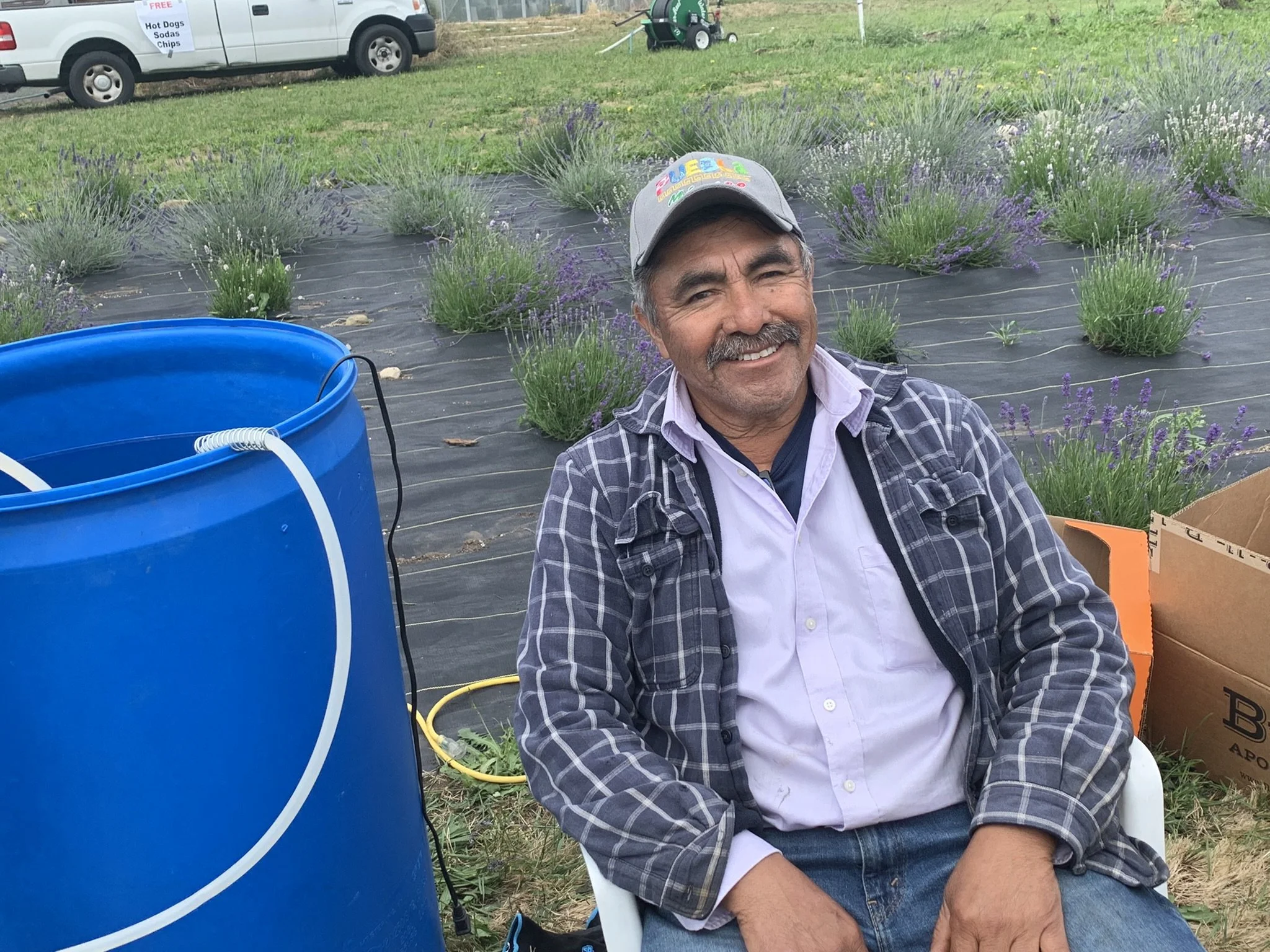The Lavender Festival in Sequim, WA
If you’ve never visited Sequim (pronounced ‘skwim’) in Washington state, add it to your list right now, and the Lavender Festival in Sequim, WA is a great introduction. Lavender thrives in Sequim because of the Olympic Mountains, which block the storms blowing in from the Pacific Ocean. This area is known as the 'Olympic Rain Shadow,' a region with a unique micro-climate that receives only 16 inches of rain a year and 250 days of sunshine. The Sequim region is only 15 miles in diameter and is the only desert in Western Washington, creating an ideal climate for growing lavender. In fact, it’s often called the “Lavender Capital of the World.”
This area has been a thriving community of growers, crafters, and artisans for decades, but in the last 20 years has become a favorite Olympic Peninsula destination. Particularly in mid-July for the annual Lavender Festival. I have visited Seqium many times, but this year I finally made it to the Lavender Festival. I was lucky enough to stay at a charming cottage by the sea, and our host, Gloria Redmond, not only taught us how to make lavender wands, she gave us the history of this wonderful tradition. There are more than a dozen lavender farms in the Sequim-Dungeness Valley, but just about everyone in Sequim grows some sort of lavender. It’s safe to say the entire town is a hazy shade of purple.
During the festival days (July 21-23 in 2023) many of the farms provide tours, demonstrations, music, food trucks, and gift shops, and in town, you’ll find a huge outdoor fair full of Northwest crafts, food/beverages, live music, and over 150 vendors that come from all over the Pacific Northwest. You can also drive around the area and find vintage street finds, pop-up shops, and nurseries that sell every kind of lavender you can possibly imagine.
Gloria Redmond, who runs the Sea Haven (a VRBO property in Sequim located right on the ocean) with her husband, Pat, has lived in Sequim for years, and she explained that the tradition began when the farmers realized there was a great interest in lavender, and how easily it grew in the area. It started out with locals gathering during the harvest time of year to make crafts with the lavender (such as wands, sachets, and oils) to share with one another. The tradition continued to grow and some of the farms opened gift shops. This attracted more tourists to the area and the Sequim Lavender Growers Association was created. Over the years these traditions flourished and the festival was started, allowing people from all over the world to come and experience the magical beauty of lavender.
Aromatherapists use lavender to treat headaches, nervous disorders, and relaxation. Herbalists use it to treat skin ailments, such as fungal infections, wounds, eczema, acne, joint and muscle pain. Lavender flowers represent purity, silence, devotion, serenity, grace, and calmness. Purple is the color of royalty and is often synonymous with elegance, refinement, and luxury. It is also the color of the crown chakra, which is the energy center associated with a higher purpose and spiritual connectivity. It’s fabulous in cooking and is one of the key ingredients of herbes de Provence. You can find lavender in just about everything these days and for good reason. It’s beautiful and smells wonderful, it has a multitude of uses, the entire plant is edible, it’s relatively easy to grow, and the dried flowers are just as (if not more) aromatic as the fresh ones.
I highly recommend a trip to Sequim, Washington any time of the year, but if you can get there for the Lavender Festival you will not be disappointed. Here is a list of some of my personal favorite places to visit while in Sequim.
The Sea Haven Hosted by Gloria and Pat Redmond is a beachfront cottage with two bedrooms and one bath. There’s even a picture-perfect mini-cottage on the beach full of books, a CD player, and hundreds of CDs. Gloria’s garden by the sea and wonderful hospitality make this a perfect place to escape any time of year.
Rancho La Morada Lavender & Flower Farm is owned by Juan Gonzalez and his lovely family. More laid back than some of the others, which meant no crowds.
Junque in the Trunque antiques and collectibles is in an old barn off Sequim-Dungeness Way. Sally the owner does not have a website, but you can find her on Etsy.
Pieces of Time Antiques & Collectibles, located downtown. Full of great treasure hunting and home to a giant stuffed walrus that’s been in the family for decades.
Wind Rose Cellars, is a local wine shop downtown. It’s small, but the wines are refreshing, local, and hand-crafted.
Dungeness Spit is a sand spit jutting out approximately 5 miles from the northern edge of the Olympic Peninsula into the Strait of Juan de Fuca. It is the longest natural sand spit in the United States and is growing in length by about 15 feet per year. You can walk around the small park leading down to the beach, walk down to the beach, or hike the 5 miles out to the lighthouse. It is a spectacular spot, but unfortunately, since it is a Wildlife Refuge, no dogs are allowed.
Get more information from The Garden or Travel in the Northwest.










